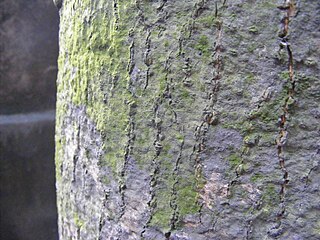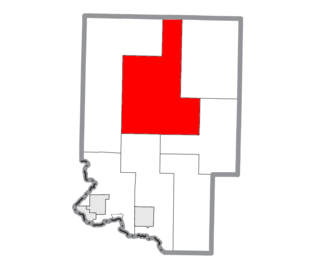| Bark River | |
|---|---|
| Country | United States |
| State | Michigan |
| Region | Upper Peninsula |
| Physical characteristics | |
| Main source | outflow of Second Lake 45°44′19″N87°19′09″W / 45.7386°N 87.3192°W |
| River mouth | Green Bay 45°34′21″N87°14′34″W / 45.5725°N 87.24278°W Coordinates: 45°34′21″N87°14′34″W / 45.5725°N 87.24278°W |
| Length | 24 mi (39 km) |
Bark River is a 23.7-mile-long (38.1 km) [1] river on the Upper Peninsula of the U.S. state of Michigan. The river flows into Green Bay on Lake Michigan in Ford River Township about 15 miles (24 km) southwest of Escanaba at 45°34′22″N87°14′34″W / 45.57278°N 87.24278°W .

A river is a natural flowing watercourse, usually freshwater, flowing towards an ocean, sea, lake or another river. In some cases a river flows into the ground and becomes dry at the end of its course without reaching another body of water. Small rivers can be referred to using names such as stream, creek, brook, rivulet, and rill. There are no official definitions for the generic term river as applied to geographic features, although in some countries or communities a stream is defined by its size. Many names for small rivers are specific to geographic location; examples are "run" in some parts of the United States, "burn" in Scotland and northeast England, and "beck" in northern England. Sometimes a river is defined as being larger than a creek, but not always: the language is vague.

The Upper Peninsula (UP), also known as Upper Michigan, is the northern of the two major peninsulas that make up the U.S. state of Michigan. The peninsula is bounded on the north by Lake Superior, on the east by the St. Marys River, and on the southeast by Lake Michigan and Lake Huron. Geographically, the Upper Peninsula has a land boundary with Wisconsin, and over-water boundaries with Minnesota and Ontario (Canada). Upper Peninsula counties also include nearby islands such as Grand, Drummond, Mackinac, and Bois Blanc, and more distant Isle Royale.

In the United States, a state is a constituent political entity, of which there are currently 50. Bound together in a political union, each state holds governmental jurisdiction over a separate and defined geographic territory and shares its sovereignty with the federal government. Due to this shared sovereignty, Americans are citizens both of the federal republic and of the state in which they reside. State citizenship and residency are flexible, and no government approval is required to move between states, except for persons restricted by certain types of court orders. Four states use the term commonwealth rather than state in their full official names.
The Bark River rises from the outflow of Second Lake (which is fed by Pine Creek and the outflow of First Lake) on the boundary between Delta County and Menominee County at 45°44′19″N87°19′09″W / 45.73861°N 87.31917°W . The North Branch Bark River rises in a marshy area just east of Schaffer, Michigan in Bark River Township and joins the main course at 45°43′28″N87°16′23″W / 45.72444°N 87.27306°W .

Delta County is a county in the Upper peninsula in the U.S. state of Michigan. As of the 2010 United States Census, the population was 37,069. The county seat is Escanaba. The county was surveyed in 1843 and organized in 1861. Its name originates from the Greek letter "delta", which refers to the triangular shape of the original county which included segments of Menominee, Dickinson, Iron, and Marquette counties.

Menominee County is a county located in the Upper Peninsula in the U.S. state of Michigan. As of the 2010 United States Census, the population was 24,029. The county seat is Menominee. The county's name comes from an American Indian word meaning "wild rice eater" used to describe a tribe. The county was created in 1861 from area partitioned out of Delta County, under the name of Bleeker. When county government was organized in 1863, the name was changed to Menominee.

Bark River Township is a civil township of Delta County in the U.S. state of Michigan. As of the 2010 census, the township population was 1,578, down from 1,650 at the 2000 census. The township takes its name from the Bark River.
The Bark River was named by some of the first railroad engineers in the area who saw a great quantity of bark floating on the water. [2]

Bark is the outermost layers of stems and roots of woody plants. Plants with bark include trees, woody vines, and shrubs. Bark refers to all the tissues outside the vascular cambium and is a nontechnical term. It overlays the wood and consists of the inner bark and the outer bark. The inner bark, which in older stems is living tissue, includes the innermost area of the periderm. The outer bark in older stems includes the dead tissue on the surface of the stems, along with parts of the innermost periderm and all the tissues on the outer side of the periderm. The outer bark on trees which lies external to the last formed periderm is also called the rhytidome.










